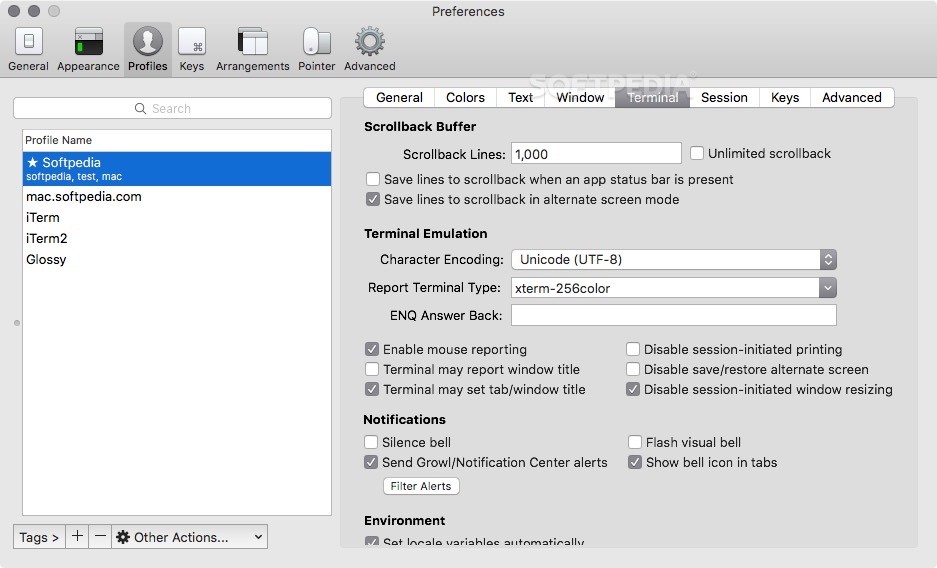

- ITERM2 AUTOCOMPLETE HOW TO
- ITERM2 AUTOCOMPLETE INSTALL
- ITERM2 AUTOCOMPLETE SERIES
- ITERM2 AUTOCOMPLETE DOWNLOAD
But if you do have any questions make sure to reach out to me on Twitter 🙂 The same process works for all other custom plugins and themes.
ITERM2 AUTOCOMPLETE INSTALL
To get the coloring and bigger font for the callout, you will have to install "figlet" and "lolcat" with: brew install figlet lolcat Restart your terminal and done! Every time you enter a command in your terminal doge will make sure you know what you just entered! And with this, you have set up your first CUSTOM plugin. So that now, all that is left to do is to add the plugin to our array of plugins in our ~/.zshrc.Īnd add the plugin to this list: # Which plugins would you like to load? # Standard plugins can be found in $ZSH/plugins/ # Custom plugins may be added to $ZSH_CUSTOM/plugins/ # Example format: plugins=(rails git textmate ruby lighthouse) # Add wisely, as too many plugins slow down shell startup. This clones the plugin from GitHub right into your new dogesay folder within ~/.oh-my-zsh/plugins. Let's do this in one command: git clone ~/.oh-my-zsh/plugins/dogesay In this case, since it's a plugin: ~/.oh-my-zsh/plugins
ITERM2 AUTOCOMPLETE DOWNLOAD
To install the plugin we will have to download the plugin and move it into the correct directory. This plugin lets doge repeat your command every time you write in your terminal. Oh-My-ZSH provides us with a small list of custom plugins to choose from in their official repo: One quick note here: Be wary, your terminal might slow down, the more plugins you add to your config. You can add your custom plugins to the general plugin directory or your custom plugin directory. Oh-My-ZSH will by default be able to source your plugins from there as well, but it's really up to you. By default this folder is called: ~/.oh-my-zsh/custom and then for example for plugins go into: ~/.oh-my-zsh/custom/plugins

Some people however prefer to put their custom plugins, themes, and configuration in a "custom" folder within the ~/.oh-my-zsh directory. You add a folder with the custom plugin in your plugin directory and you are good to go. Does that mean we simply have to create a folder with a custom plugin/theme in that directory and Oh-My-ZSH will be able to source it on start? We now know that Oh-My-ZSH looks for plugins and themes in the respective directory under ~/.oh-my-zsh.

ITERM2 AUTOCOMPLETE HOW TO
So let's get going! How to install custom plugins & themes However, in this tutorial, we will stick to themes, plugins, and the ~/.zshrc config file to config everything. Or to see them in your finder, write: open ~/.oh-my-zsh/themesįrom here, you can go off on your own and look around in your ~/.oh-my-zsh, try to understand the different subfolders and config files. To see installed themes in your terminal: ls ~/.oh-my-zsh/themes Just swap out plugins for themes in your terminal command and you will see all the current themes installed. The same counts for your themes! On installation of Oh-My-ZSH, lots of different themes were installed for you to be accessed at any time. Or this to view in your Finder: open ~/.oh-my-zsh/plugins If you want to have a look yourself what plugins you currently have installed simply execute this, to see all the plugins your terminal: ls ~/.oh-my-zsh/plugins So, that once you add a plugin in the array and restart iTerm2, all that Oh-My-ZSH needs to do is to fetch that already installed plugin from the plugin folder and give you a *seeming less experience. What you might not know is that, during our installation of Oh-My-ZSH, all of the plugins that are listed in the official documentation were installed at *~/.oh-my-zsh/plugins. When we setup up our default plugins in the first part of this series, we simply added them to the array of plugins listed in the ~/.zshrc, like so: # Which plugins would you like to load? # Standard plugins can be found in $ZSH/plugins/ # Custom plugins may be added to $ZSH_CUSTOM/plugins/ # Example format: plugins=(rails git textmate ruby lighthouse) # Add wisely, as too many plugins slow down shell startup.īut how did they get installed from there? Now that we have set up our iTerm2 with Oh-My-ZSH, let's try to understand what it is we installed and we are the files to configure it. Now we want to dive deeper, go past the default plugins, and explain a little more about Oh-My-ZSH and how it works. In the first part of this series, we talked about how to install and set up your terminal to get you up and running quickly and with little effort, but with functionality and style.
ITERM2 AUTOCOMPLETE SERIES
*This post is the 2nd part of my series about iTerm2 and Oh-My-ZSH.


 0 kommentar(er)
0 kommentar(er)
